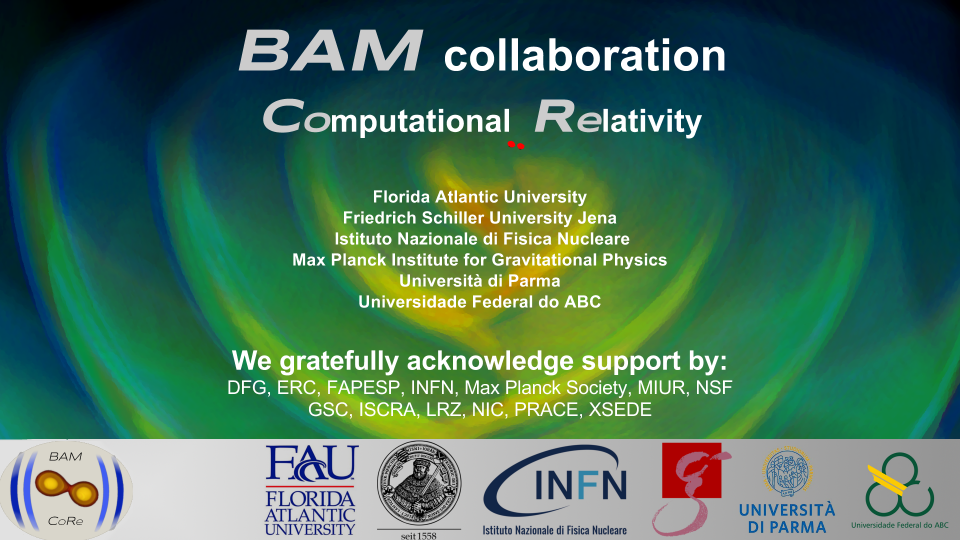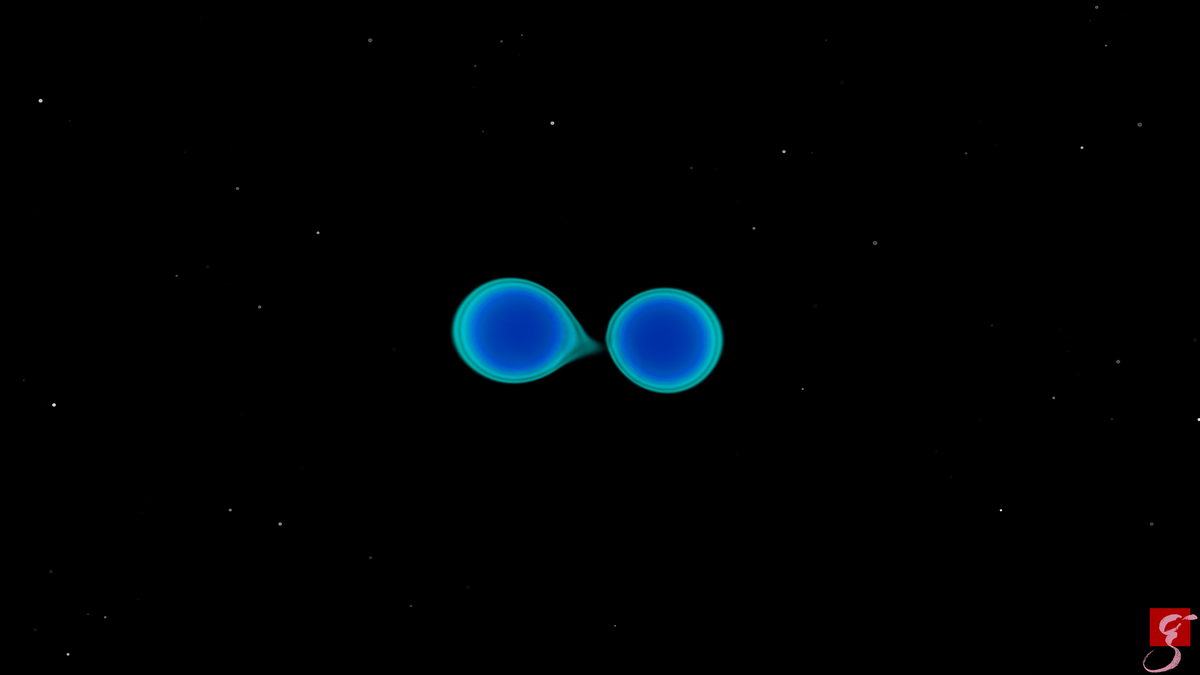
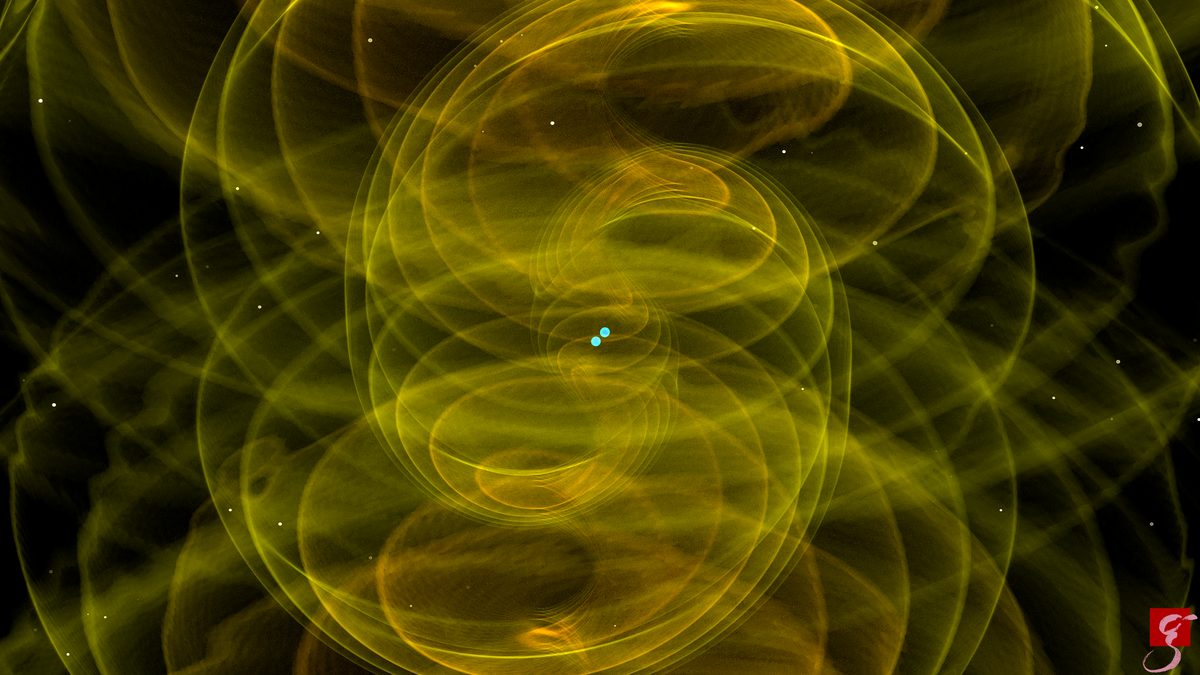
On August 17, 2017 the Advanced LIGO and Advanced Virgo detectors observed a gravitational wave signal from two merging neutron stars for the first time. All other detections up to then had been from merging black holes. Neutron stars consist almost entirely of neutrons and are the densest stars known to exist. They are so dense that a neutron star with the mass of our sun has a size of only about 20 km. When two such stars orbit around each other they loose energy due to the emission of gravitational waves so that the orbits become tighter until they finally merge into one larger neutron star. When this larger star is massive enough it collapses into a black hole. During the collision of the stars material is ejected, so that the final merged object is surrounded by a thick ring of neutron rich material. This material undergoes nuclear reactions that release energy in the form of electromagnetic radiation, an event known as kilonova. Followup observations of the sky region where the gravitational wave signal came from with telescopes and satellites have revealed first a Gamma Ray Burst just two seconds after the merger, as well a new light source that emitted light of changing frequency over the following days and weeks. This marks the first observation of a kilonova following a gravitational wave signal. It is believed that most heavier elements in the universe such as gold or platinum were created in the thick rings produced by such mergers.
The numerical relativity group at FAU led by Dr. Tichy is performing computer simulations of such merging neutron stars using Einstein's equations of General Relativity. This work is carried out within the BAM collaboration on Computational Relativity in close cooperation with Dr. Bernuzzi, Dr. Bruegmann and Dr. Dietrich who lead research groups in Italy and Germany. The BAM collaboration has very recently published a gravitational waveform model (https://arxiv.org/abs/1706.02969) derived from its simulations. This new model has been one of the tools used to analyze the signal measured by the gravitational wave detectors. With it one can extract more information from the observed gravitational wave signal about the poorly known material properties of matter at the extreme densities in neutron stars.
We have performed a simulation of two neutron stars with masses that are consistent with the newly observed event. The images below show snapshots of the stars (left) and gravitational waves (right) at different times:


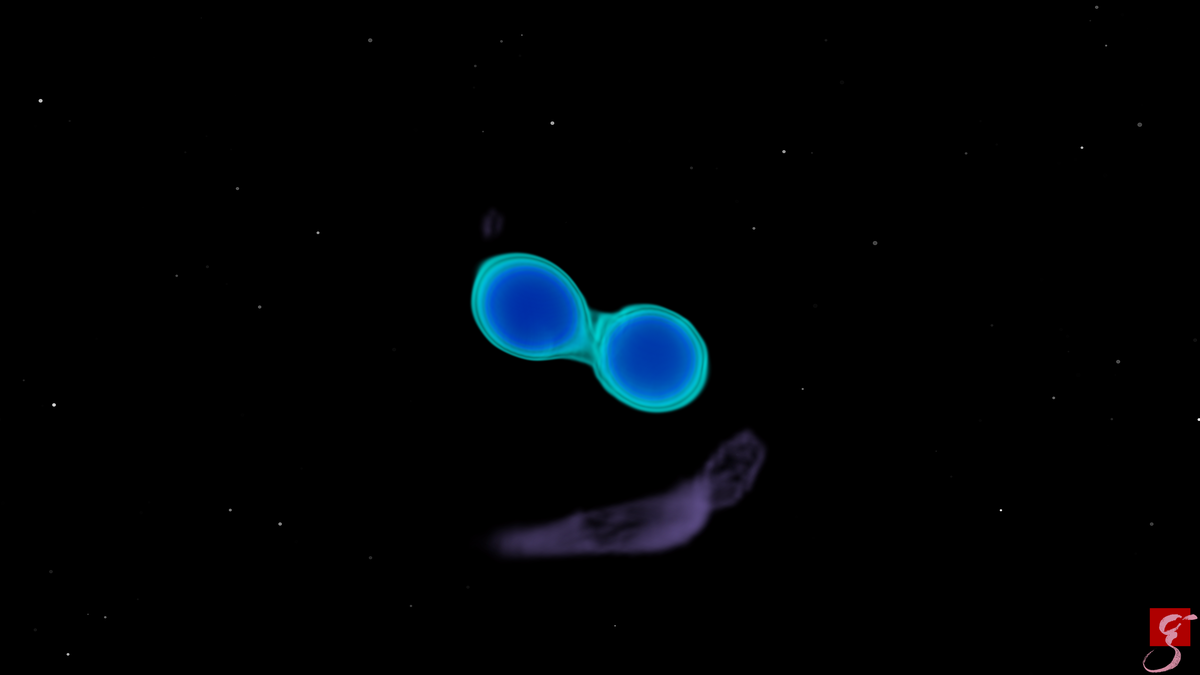
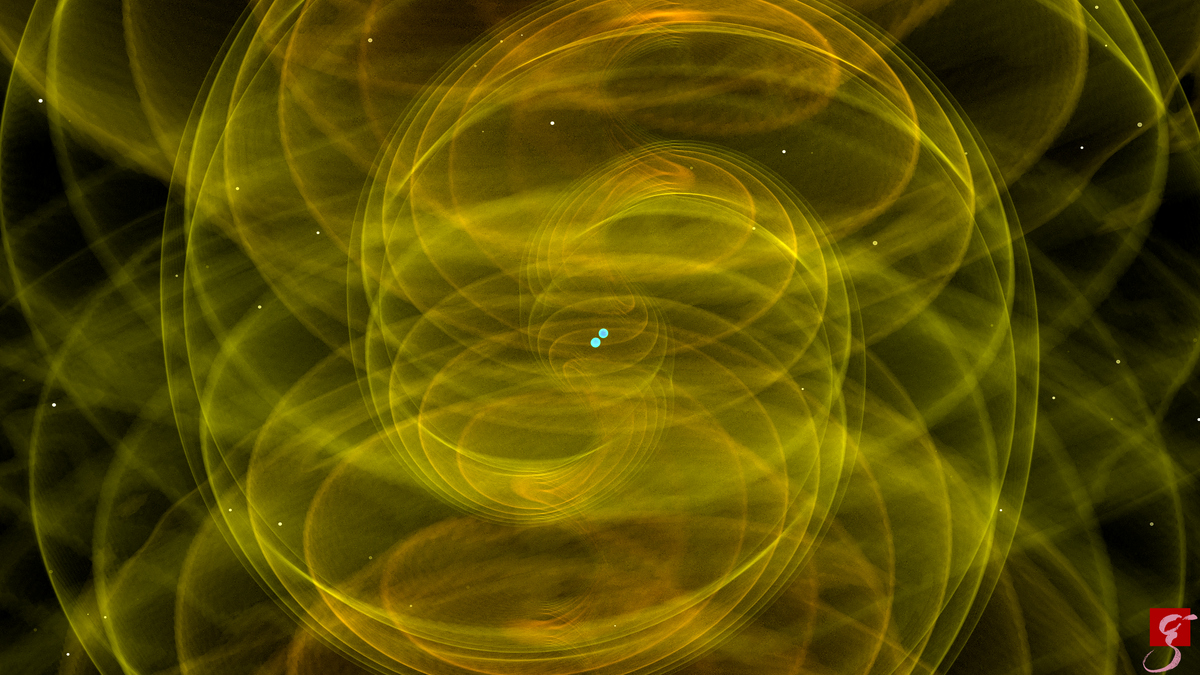
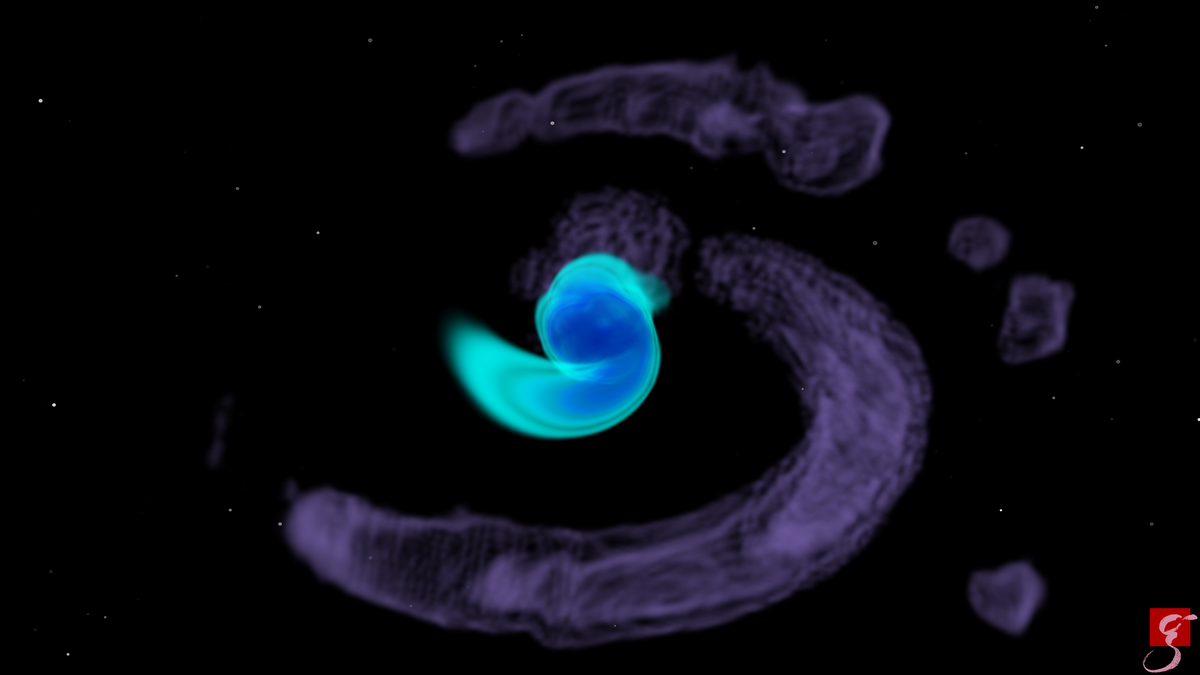
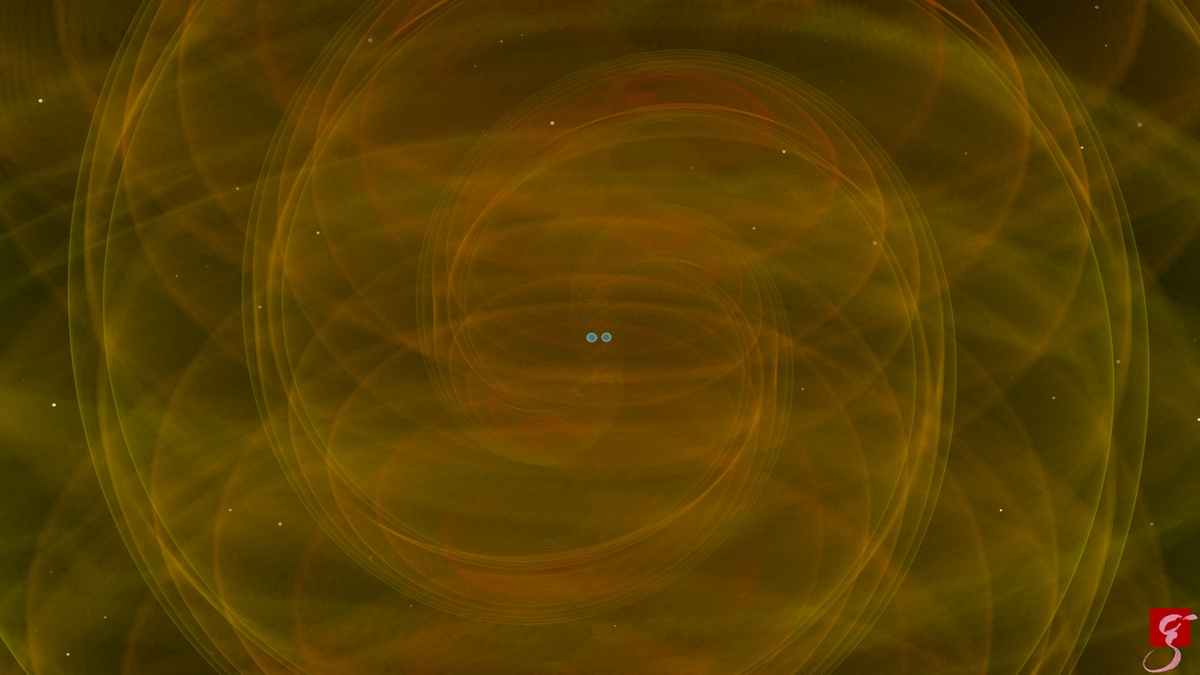
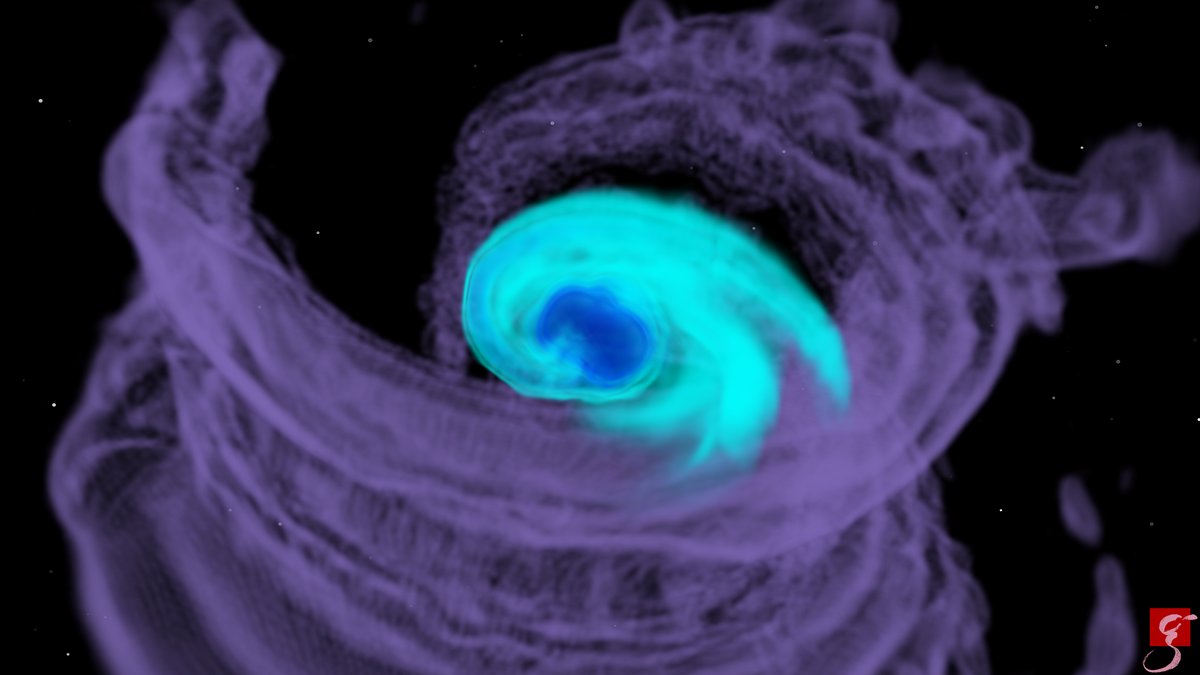
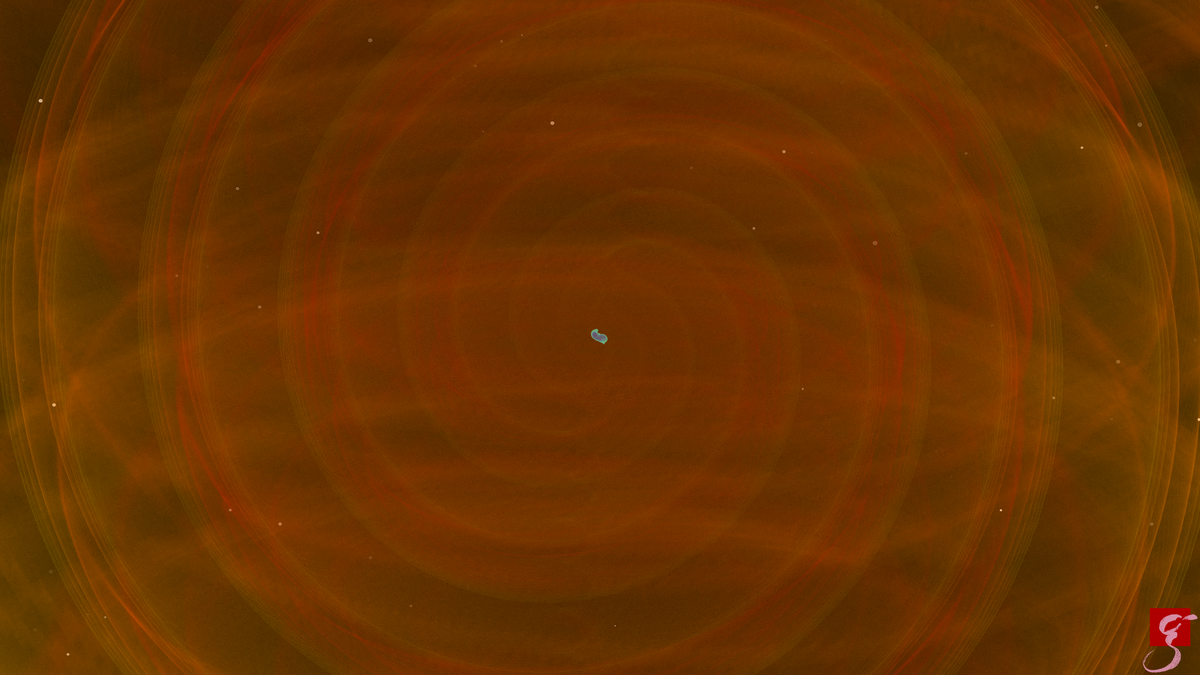
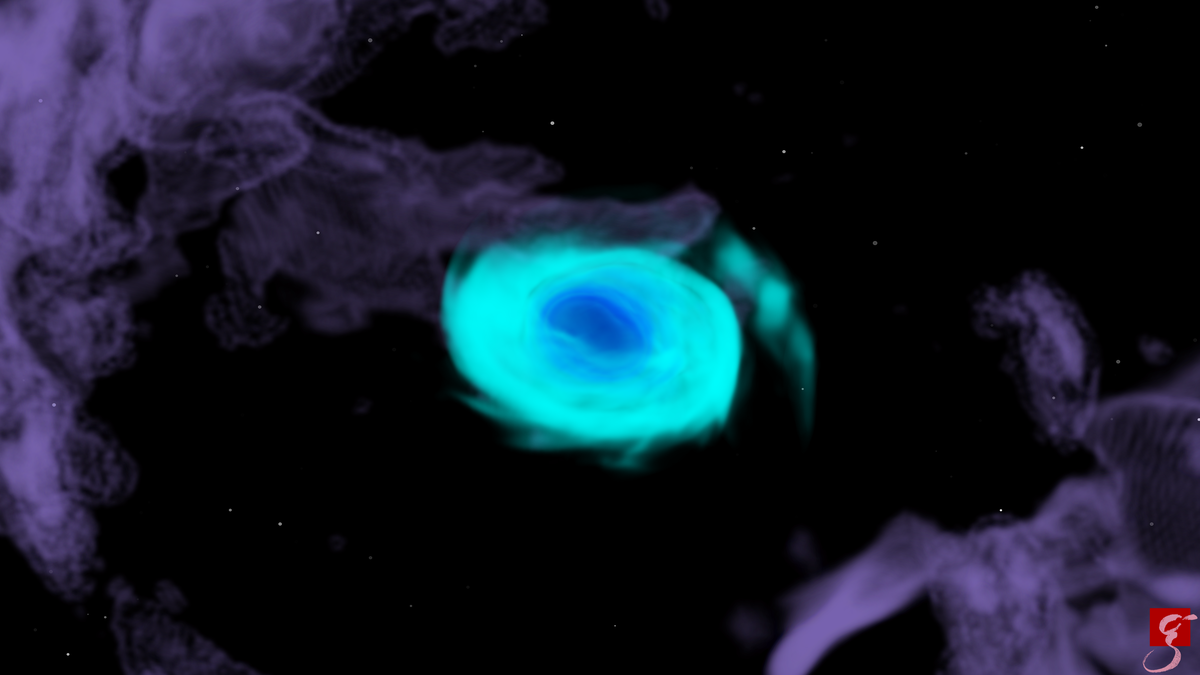
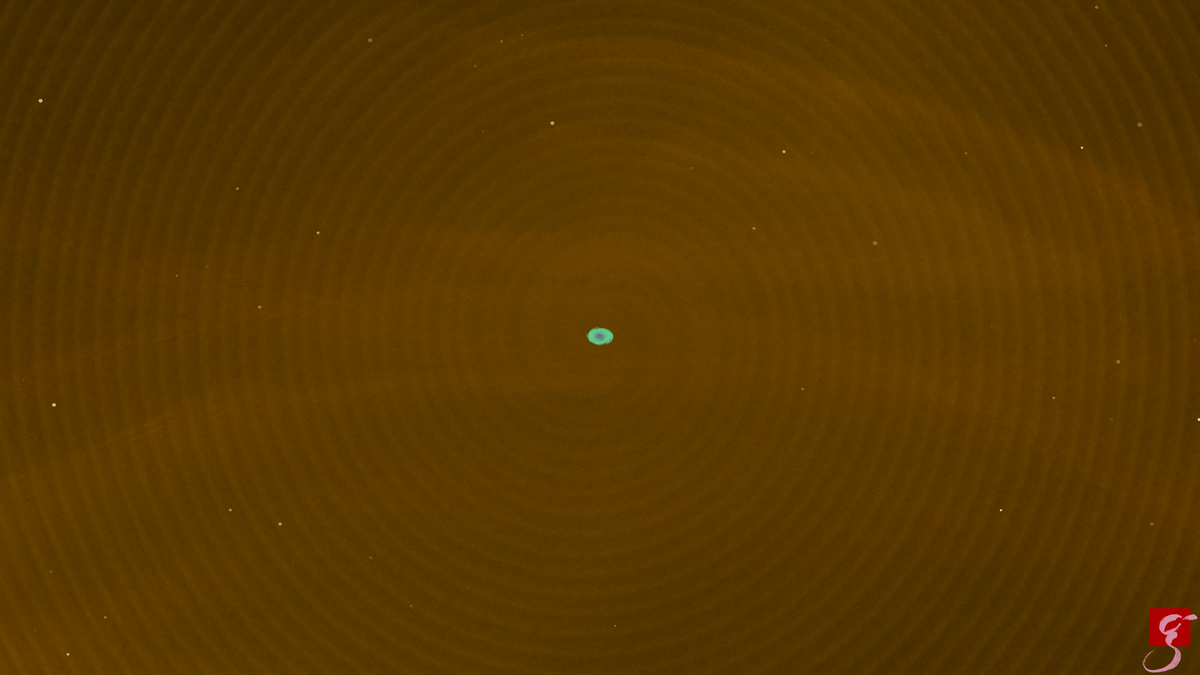
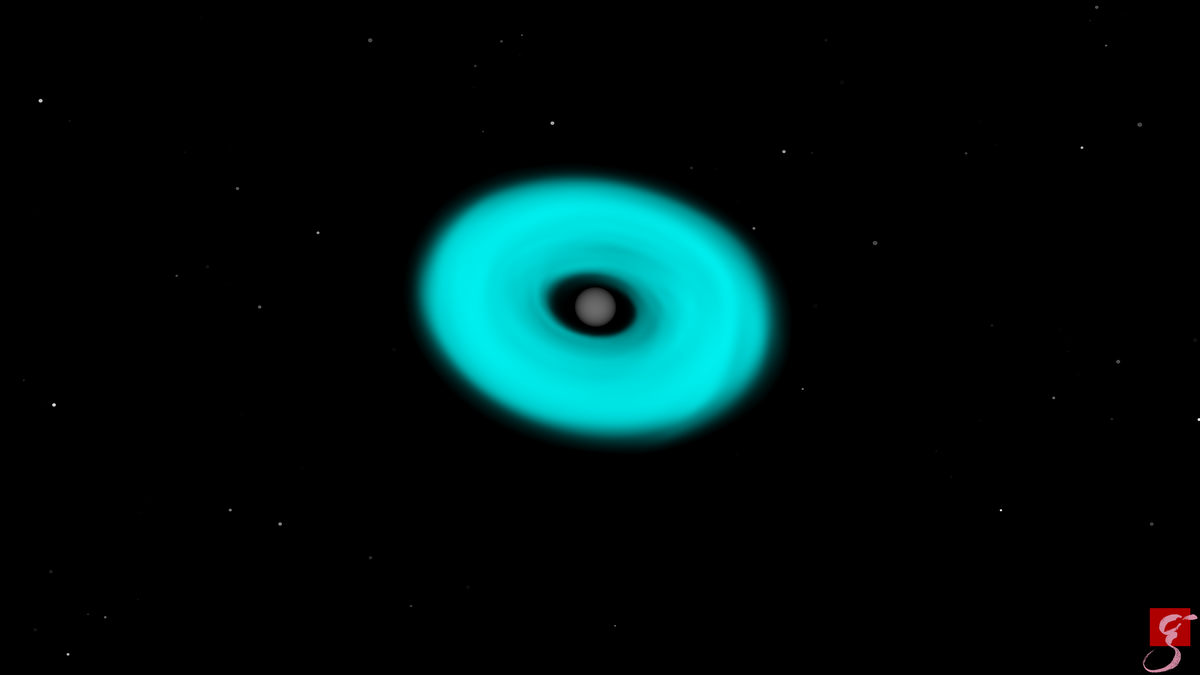
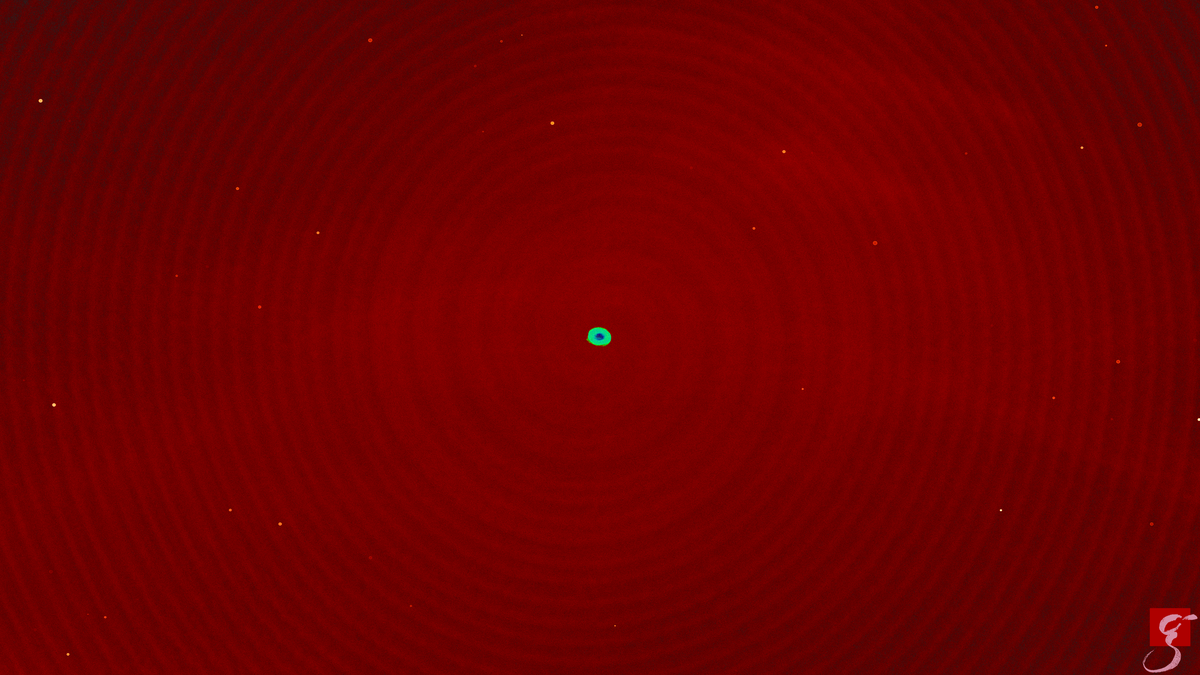
You can see a movie of the simulation by clicking here or on www.youtube.com/watch?v=V6cm-0bwJ98. Besides the two stars, the movie also shows the emitted gravitational waves in yellow, as well as the strain signal on the bottom. This movie was released under "SELECTED IMAGES & VIDEO" on www.ligo.org/detections/GW170817.php when the detection was announced by the LIGO Scientific Collaboration. As one can see a black hole surrounded by a massive ring forms at the end of our simulation.
In order to start simulations of two neutron stars one also needs initial conditions for the all variables involved. Computing such initial conditions for realistic stars with spin is very complicated and has only become possible because of research carried out in the numerical relativity group at FAU ( https://arxiv.org/abs/1107.1440, https://arxiv.org/abs/1209.5336 ). The detection of the two merging neutron stars is a tremendous achievement that is obviously fascinating and thus has captured the news when it was announced. However, as is usually the case in science, we can learn much more from a discovery like this when methods developed by other scientists such as the ones in the BAM collaboration are used to analyze the results.
Credits:
